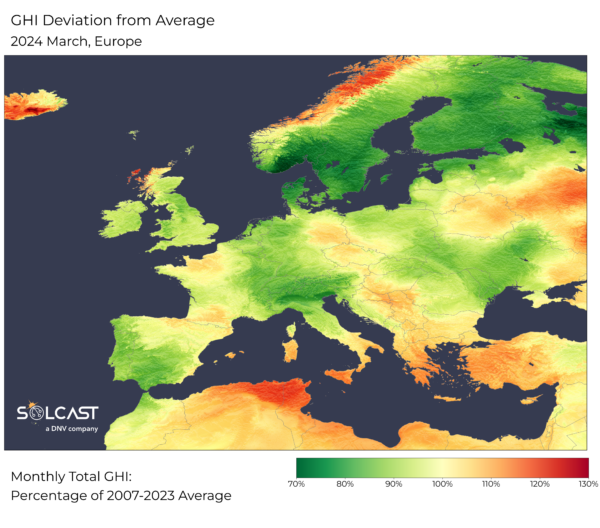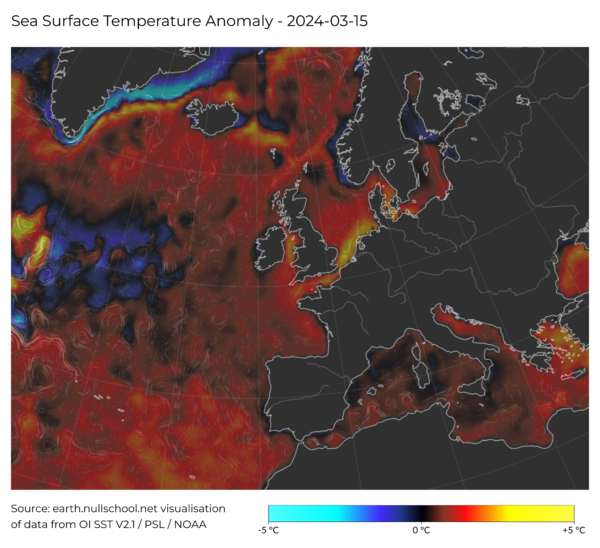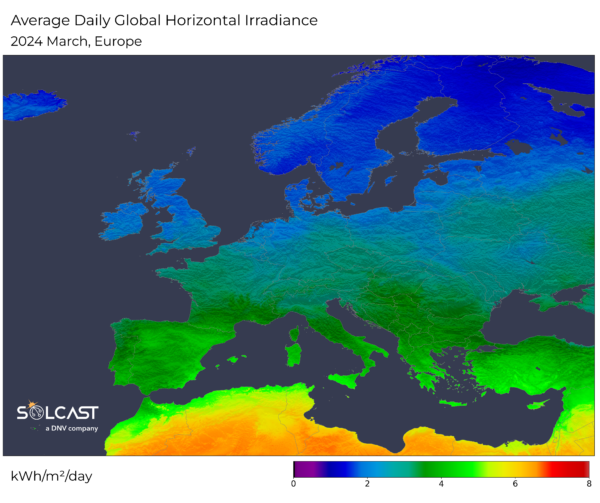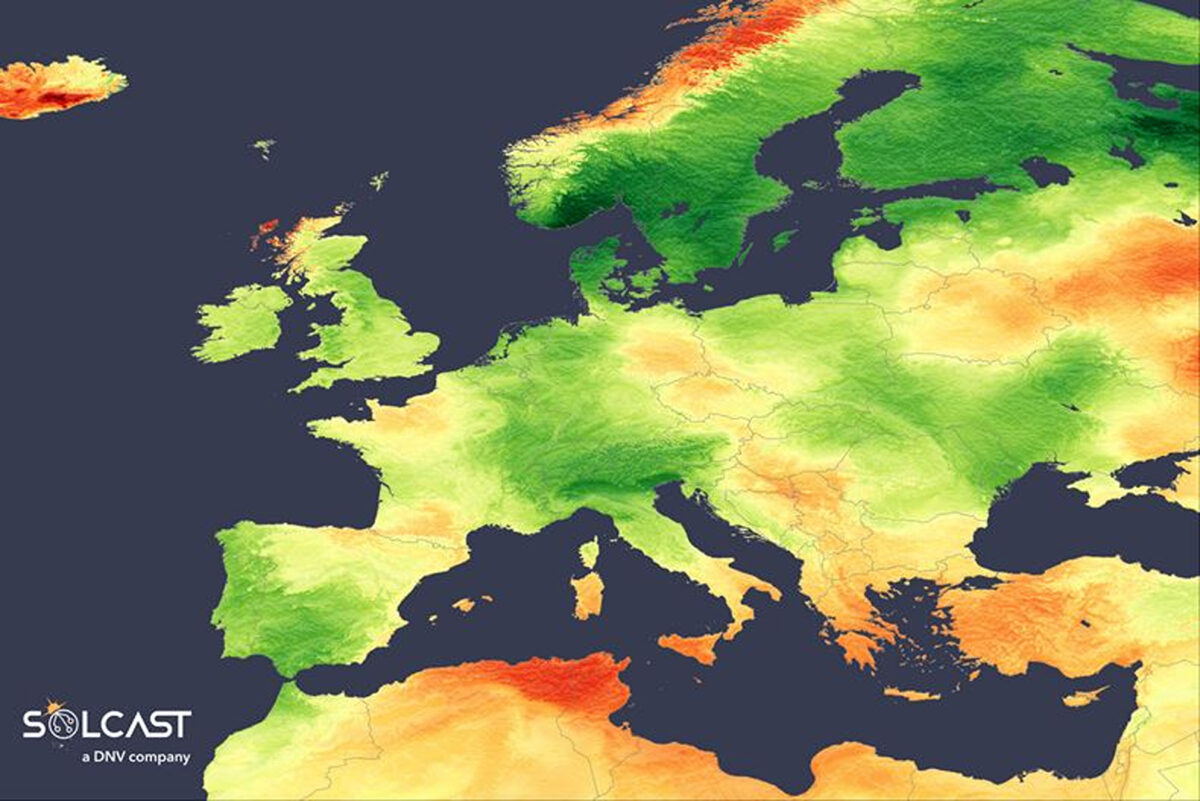Most European solar operators and grids saw less solar irradiance and production than normal in March according to data from the Solcast API, due to enhanced westerly winds bringing moist air off a relatively warm Atlantic ocean. Large areas of the continent saw irradiance down 10% to 25% below normal for March.

Norway and Sweden saw the largest shortfalls, seeing 30% less than normal in populated southern areas. Germany and the Netherlands, the countries with the most solar and most solar per capita installed in Europe respectively, saw 10-15% shortfalls. Similar shortfalls were seen across Poland, Ukraine, Portugal, Spain, northern Italy, England and Ireland.
The solar shortfalls were caused by increased cloudiness due to stronger, unstable westerly winds off the Atlantic Ocean. Ocean surface temperatures in the North Atlantic have been at 1 C to 3 C above normal, a March record for some parts of the ocean. The relatively warm seas, combined with stronger unstable wind patterns, produced more clouds, and also pushed clouds further inland across the continent.

Data from the Solcast API shows that north of the Alps, average daily irradiance was only 2-3 kWh per day on the continent, lower in the UK and Scandinavia. Iberia and Mediterranean regions fared only slightly better, with 3-4 kWh per day.
Popular content

Trends in high temperature trends have continued with last month the hottest March on record, the 10th record month in a row, according to data from the Copernicus Climate Change Service. This led to much more rain than snow – Solcast data shows this warmth reflected in its solar snow soiling data, which shows below-average snow soiling affecting Europe's solar PV fleet than normal for March, despite above-average total precipitation.
Solcast produces these figures by tracking clouds and aerosols at 1-2km resolution globally, using satellite data and proprietary AI/ML algorithms. This data is used to drive irradiance models, enabling Solcast to calculate irradiance at high resolution, with typical bias of less than 2%, and also cloud-tracking forecasts. This data is used by more than 300 companies managing over 150GW of solar assets globally.
The views and opinions expressed in this article are the author’s own, and do not necessarily reflect those held by pv magazine.
This content is protected by copyright and may not be reused. If you want to cooperate with us and would like to reuse some of our content, please contact: editors@pv-magazine.com.


1 comment
By submitting this form you agree to pv magazine using your data for the purposes of publishing your comment.
Your personal data will only be disclosed or otherwise transmitted to third parties for the purposes of spam filtering or if this is necessary for technical maintenance of the website. Any other transfer to third parties will not take place unless this is justified on the basis of applicable data protection regulations or if pv magazine is legally obliged to do so.
You may revoke this consent at any time with effect for the future, in which case your personal data will be deleted immediately. Otherwise, your data will be deleted if pv magazine has processed your request or the purpose of data storage is fulfilled.
Further information on data privacy can be found in our Data Protection Policy.